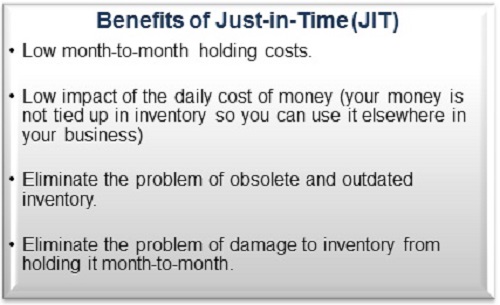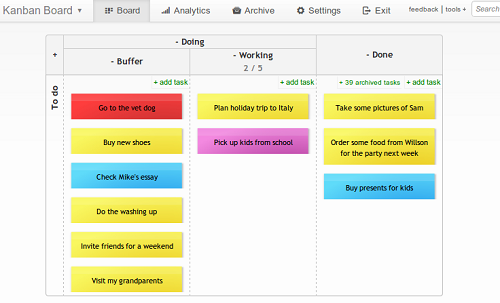Difference Between JIT and Kanban

JIT vs. Kanban
In inventory management, it is best to always keep in mind that ‘inventory is waste’. This is the same philosophy encapsulating the just-in-time (JT) inventory strategy, also known as the Toyota Production System. This strategy aims at improving a business’s return on investment by cutting in-process inventory and associated carrying costs. One key element of the system is Kanban; This Japanese term is a compound word, where ‘kan’ means ‘visual’, and ‘ban’ means ‘cards’; literally put, Kanban refers to visual cards. Moreover, these play an important role in the implementation of JIT by serving as visual aids that trigger action. Although often associated with one another, JIT and Kanban are not one and the same entity. In the following article, we will define the two terms and outline the differences between them.
First, what is JIT? It is an inventory management method proven to improve a manufacturing firm’s return on investment, efficiency, and quality of work by fundamentally reducing inventory. JIT advocates viewing inventory as cost incurring instead of value adding, contrary to traditional business practice. It focuses on having the ‘right material, at the right time, at the right place, and in the exact amount’.
As idealistic as it may seem, it carries a number of beneficial effects to the company. 1) It simplifies warehouse-to-shelves inventory flow, making it easier to manage; 2) Supply is synchronized with production demand, thus cutting storage costs and set-up/changeover time; 3) Production scheduling and work hour consistency resulting from synchronized supply and demand lead to reduction of overtime hours of workers and more spare time for training and workshops to help improve their skill level; 4) Employees with multiple skills are also optimized by being allocated to parts of the process needing manpower; 5) And lastly, emphasis is placed on the company’s relationship with its suppliers.
However, there is a disadvantage to this strategy – JIT operation may leave the suppliers highly susceptible to supply shocks due to potential demand fluctuation. With proper long-term relationship management with suppliers, though, this downside can be reduced to a minimum.

Kanban, on the other hand, is not an inventory control system by itself. Rather, it is a scheduling system that tells a firm what to produce, when to produce it, and how much to produce; it is its very nature that makes it a suitable element in implementing JIT. Kanban is used as an indicator of demand that it immediately signals to the whole of the supply chain. Here’s how it works: One of the components needed to make widgets is a 10″ stem-bolt and it arrives on pallets. Say there are 100 stem-bolts on a pallet; when the pallet is empty, the person assembling the widgets takes a card that was attached to the pallet and sends it to the stem-bolt manufacturing area. Another pallet of stem-bolts is then manufactured and sent to the widget assembler. In essence, Kanban is a ‘pull’ type of production system, and every Kanban card, pallet, bin, or box sent to the supplier or part manufacturer indicates the general demand for the end product. In effect, the Kanban scheduling system makes it possible for a business to be reactive to customer needs instead of attempting to draw estimated forecasts.
Summary
1) JIT is an inventory management strategy; one of its elements is Kanban.
2) Kanban is a pull or demand type of scheduling system, usually in the form of cards, bins, palettes, or boxes.
3) JIT uses Kanban as a means to prevent inventory-related costs. Together, they make it possible to have the ‘right material, at the right time, at the right place, and in the exact amount’.
- Differences Between Fraternity And Sorority - January 8, 2014
- Differences Between Lucite and Plastic - January 7, 2014
- Differences Between Oil and Butter - January 6, 2014
Search DifferenceBetween.net :
 Email This Post
: If you like this article or our site. Please spread the word. Share it with your friends/family.
Email This Post
: If you like this article or our site. Please spread the word. Share it with your friends/family.
1 Comment
Leave a Response
References :
[0]http://www.driveyoursuccess.com/2010/03/simplifying-minmax-jit-inventory-do-you-know-what-your-company-should-run.html
[1]https://commons.wikimedia.org/wiki/File:Kanban-board.png


What is the difference between JIT and pull system? Please explain with appropriate examples.